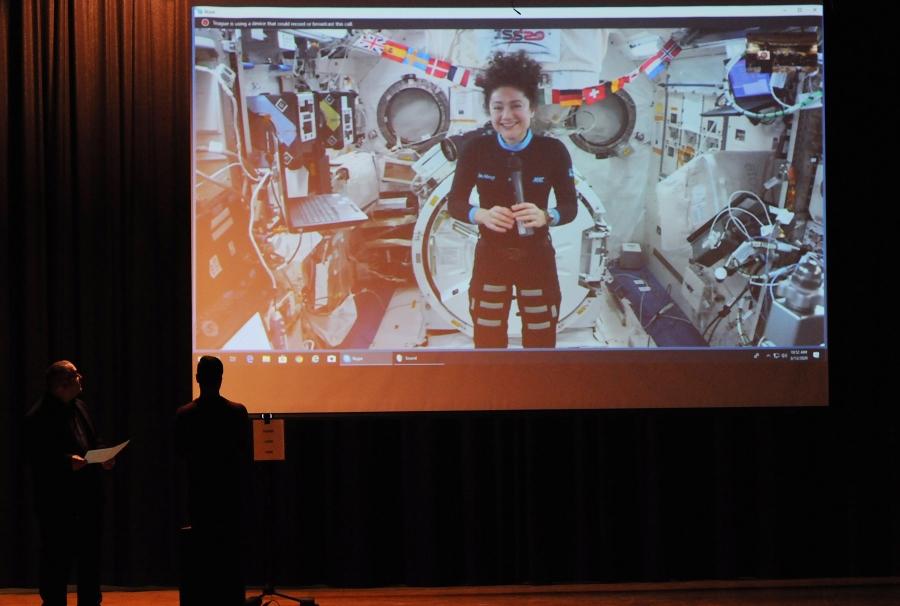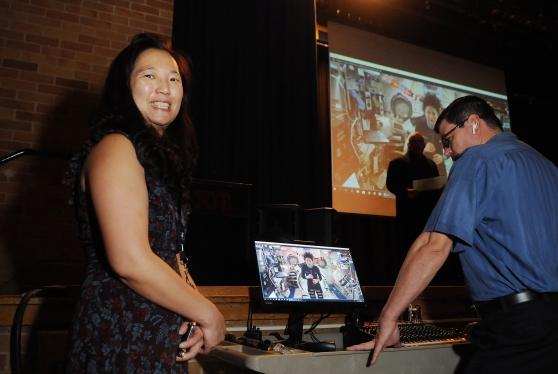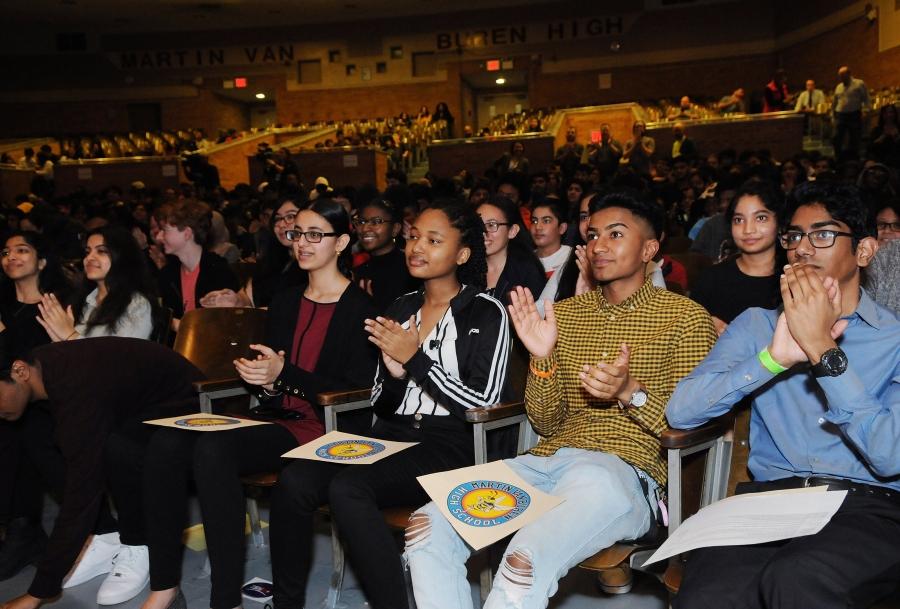‘Van Buren HS, this is Mission Control’

On a screen at Van Buren HS, astronaut Jessica Meir is live from the International Space Station.
For students at Martin Van Buren HS in Queens, the lesson was out of this world.
On March 13, Van Buren became the first New York City public high school to host a NASA downlink — a live videoconference with an astronaut aboard the International Space Station.
“I’ve been waiting for this day for such a long time,” junior Matthew Johnson said as the downlink got underway.
In the Van Buren auditorium, where students gathered to watch astronaut Jessica Meir on a large screen, the air crackled with excitement as a voice said, “Martin Van Buren HS, this is Mission Control.”

Staff at Van Buren HS are ready to begin the video conference.
The moment was a dream come true for STEM teacher Carol Wang-Mondaca. “A lot of my kids think opportunities don’t open up for them because they’re not deserving. It’s not an equal playing field for them,” she said. “I felt that by bringing this here, it validates them.” After years of declining enrollment and below-average graduation rates, the Queens Village high school is beginning to see steady academic improvements.
In 2019, Wang was selected to participate in NASA’s Goddard Institute of Space Studies Climate Change Research Initiative. She works with a NASA research scientist to study wetlands in Queens, like those in Alley Pond Park near Douglaston. When wetlands are destroyed, carbon that has been stored in the soil for thousands of years is released into the atmosphere, which contributes to global warming.
Syed Ismail, a Van Buren senior, was chosen to work with Wang on the research team.
“Before we started the project, I thought I wanted to be an electrical engineer because I figured the future would be technological,” he said. “Now I understand that the future depends on understanding climate change, and I want to be an environmental engineer.”
Wang’s work with NASA led to her interest in bringing an in-flight educational downlink to Van Buren — an opportunity for students to participate in a live 20-minute question-and answer session with an astronaut aboard the space station.
“It’s honestly incredible,” said junior Jennifer Cheda, who welcomed guests in the lobby, where there was a display of red lettuce plants grown by students from seeds sent to the school from space. “The opportunity to work with NASA is a big deal for us.”
To prepare for the downlink, more than 200 Van Buren students submitted questions for Meir, who was one of two female astronauts who made history in October when they participated in the first all-woman spacewalk. Wang painstakingly whittled down the list to 22 questions, and students practiced asking them in the weeks leading to the event.

Van Buren HS students respond to the astronaut’s message.
“This is a school that’s seen some hard times, and this event is a wonderful opportunity for us,” said Van Buren Chapter Leader Camille Toma.
Students asked a range of thoughtful queries during the downlink, from the scientific — “What do you believe will be the benefits of wider exploration of the lunar surface?” — to the personal.
One student asked, “What are some interesting things you have seen, felt or learned in space that you wish everyone on Earth knew about, and would it change the way we think about certain things?” Meir gave this response: “The view we have up here is extraordinary, and when you see that with your own eyes, and you’re looking down at this fragile blue ball beneath you — everywhere you’ve ever been, every experience you’ve ever had, all the people I’ve ever known in my life — you see it from this unique perspective,” Meir said.
Looking down at Earth from space, you don’t see any borders, she said. “It makes you really understand and feel that we truly are in this all together.”